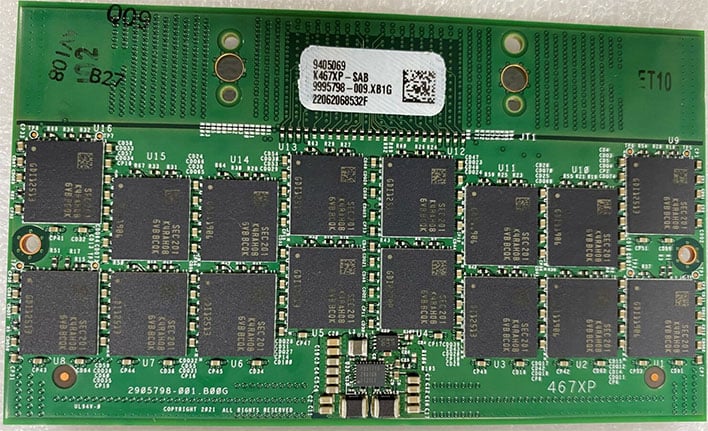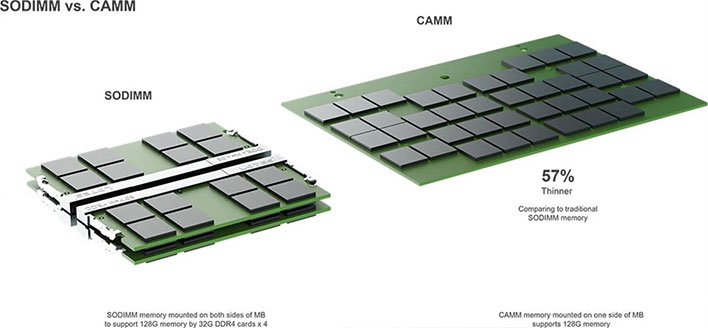Dell's CAMM Is Coming For Your SO-DIMM Laptop Memory And JEDEC Is On Board

The next time you purchase a laptop, gaming or otherwise, you might be surprised to discover that it's rocking a different type of memory module than you're used to seeing. While the majority of laptops up to this point have employed traditional SO-DIMM (Small Outline Dual In-Line Memory Module) sticks, Dell's CAMM standard introduced last year now has the backing of JEDEC, the trade organization that sets and ratifies memory standards that the industry at large typically follows.
CAMM stands for Compression Attached Memory Module and it is a completely different form factor than SO-DIMM, meaning they're not interchangeable within the same laptop (or mini PC). One thing that's particularly interesting is that Senior Distinguished Engineer Tom Schnell developed CAMM for Dell, which holds the patent on the design.
The obvious concern there is that such a standard could run counter to the concept of an open design. However, Dell has gone on record multiple times saying CAMM is not proprietary. Schnell doubled down on this in a discussion with PCWorld's Gordon Ung, in which he said JEDEC is on track to formally adopt a version of CAMM as a memory standard for future laptops.
What that means in terms of royalties remains to be seen, but according to Schnell, that's not the focus. At the same time, his comments left open the door to some kind of compensation.
"Dell is a huge company, we don’t keep the lights on because we get royalties for a patent. We basically want to recover the cost of inventing it, and implementing it," Schnell said.
Bringing the standard to JEDEC is a big deal. Of the nearly two dozen companies in the task group that voted on CAMM becoming a standard, Schnell says there was "unanimous approval of the 0.5 spec," and a 1.0 spec expected to finalized in the second half of this year. Should that happen, the first laptops to feature CAMM support based on JEDEC's specs will arrive in 2024.
Schnell isn't saying which specific companies voted for the spec's approval—there are over 300 members in the JEDEC trade group, including Apple and others—only that it includes a varied mix of suppliers across OEMs, SoC firms, connector supplies, and so forth.
Why change what isn't broken? It's not so much about fixing anything as it is about introducing what Dell and apparently JEDEC feel is a better form factor. Compared to SO-DIMM modules, CAMM is 57 percent thinner. For mobile workstations that come stuffed with RAM—say, 128GB—the manufacturer may have to stack SO-DIMM modules requiring a thicker chassis. That wouldn't be necessary with CAMM.
In addition to higher memory density, CAMM should also enable higher data transfer rates to bust through the so-called "brick wall" at DDR5-6400 speeds. Plus there's a potential benefit for cooling, depending on how it's implemented within a laptop design.
One other benefit is dual-channel support on a single CAMM module. In theory, this should prevent laptop makers from pushing out single-channel systems, as can (and does) happen now when laptops ship with a single stick of RAM. It's not clear if they'll also be less inclined to ship models with the memory soldered to the motherboard, but fingers crossed that will become a thing of the past as well.


